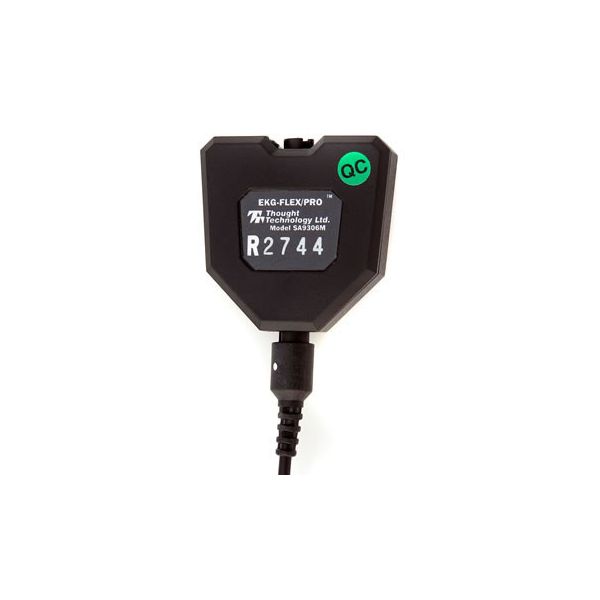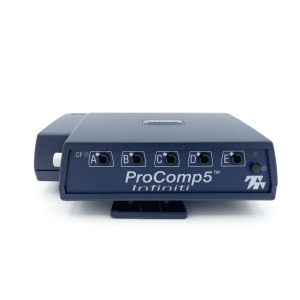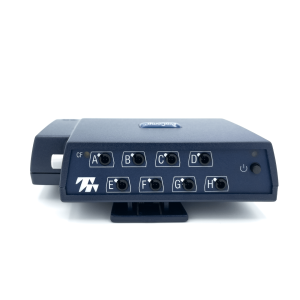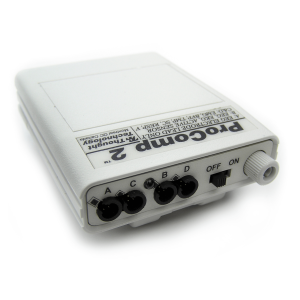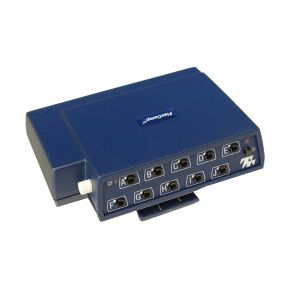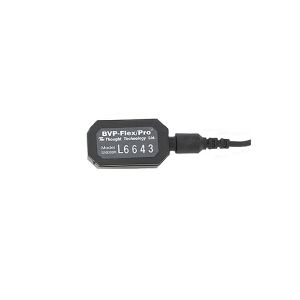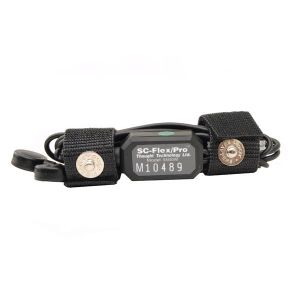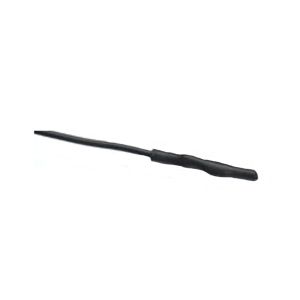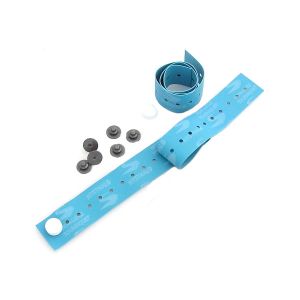The Thought Technology pre-amplified electrocardiograph (ECG/EKG) sensor (T9306M) for the Procomp Infiniti Systems or Procomp+. Used for directly measuring electrical activity of the heart.
The T9306M EKG Sensor connects via extender cables for a single channel hook up.
This cable is approximately 48 in (122.5 cm) in length and is terminated with a TTL T8720M sEMG Sensor Extender cable (included), with 3 snap style receptacles that accept many popular disposable sensors.
Skin surface sensors are optional, BMI GS26,or GS-27 are recommended.
Operating Principle:
Use the Sensor Extender Cable (TTL T8720M). The surface electrodes monitor electrical activity from the central axis of the heart and the reference electrode on the opposite side of the chest.
EKG (Electrocardiography) is similar to sEMG (surface Electromyography): The sensor detects and amplifies the small electrical voltage that is generated by the heart muscle when it contracts.
The actual EKG signal is measured in microvolts (uV). Most often, though, the clinically useful measures are those that are computed from the raw EKG: the heart rate (HR) and its inverse, the inter-beat interval (IBI). HR is measured in beats per minute (B/min or Bm) and IBI, in milliseconds (ms).
The standard EKG sensor placement requires that the negative sensor be placed on the right shoulder, the positive sensor be placed on the lower center or left side of the chest (xyphoid process) and the ground sensor, on the left shoulder.
When a chest placement is impossible or too invasive, it is possible to place the sensors on the forearms. For a forearm placement, the negative lead should be placed on the right forearm, while both the positive and ground leads are placed on the left forearm.
EKG measures muscle activity by detecting and amplifying the tiny electrical impulses that are generated by muscle fibers when they contract. Since all the muscle fibers within the recording area of the surface sensor contract at different rates, the signal detected by the sensor is a constantly varying difference of potential between its positive and negative sensors. The number of muscle fibers that are recruited during any given contraction depends on the force required to perform the movement. Because of this, the intensity (amplitude) of the resulting electrical signal is proportional to the strength of contraction.
Warranty
1 Year manufacturer warranty.
Specifications
- Channel Bandwith: 0.50Hz - 1kHz
- Accuracy: +/- 3uV RMS, +/-5% of reading @ 25 to 30 degrees C
- Signal Input Range: 0 - 12mV RMS
- Signal Output Range: 0 - 600mV RMS
- Input/Output Gain: 50
- Sensitivity: <0.1mV RMS
- Input Impedance: 1,000,000 Mohms in parallel with 10pF
- CMMR: >130dB
- Size (Approx): 1.45" x 1.45" x 0.45" ( 37mm x 37mm x 12mm)
- Weight (Approx): 1oz ( 25g )
- Current Consumption: <1.5mA

